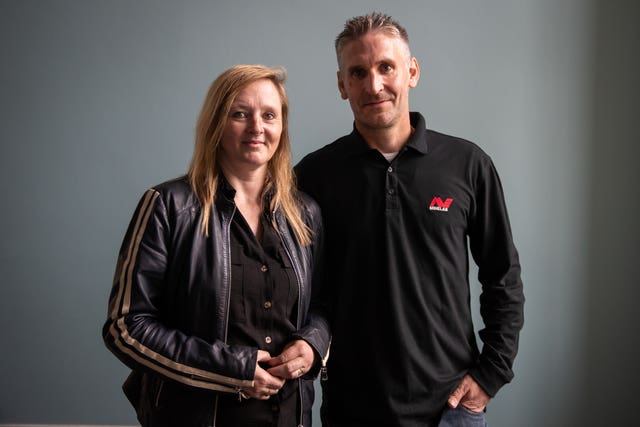A hoard of coins dating back to the Battle of Hastings shows evidence of early tax evasion in Britain.
Thousands of silver coins unearthed in Somerset by a metal-detecting couple shine fresh light on the aftermath of the Norman invasion, the British Museum has said.
Coins from around 1066 depicting both the defeated King Harold II and the triumphant conqueror William I were found in a field in the Chew Valley.

Rebecca Pow, Minister for Arts, Heritage and Tourism, said: “This is a very exciting discovery and important finds like this shed new light on the remarkable and fascinating history of our country.”
Coins in the 1,000-year-old hoard show signs of being illicitly tampered with, sporting mixed designs on either side.
Experts say this is evidence that the person striking the coins was using an older design – from an older coining tool – and essentially avoiding paying a fee to obtain the up-to-date design.
Some coins in the Norman treasure hoard show William on one side, and Harold on the other, despite the Anglo-Saxon monarch having been overthrown.

Metal detectorists Adam Staples and Lisa Grace found the 2,528 coins in a field in January 2019.
They said: “It’s an amazing feeling to have unearthed this spectacular hoard. We’ve been dreaming of this for 15 years but it’s finally come true.”
Mr Staples, 43, said he and his girlfriend were training friends to use their metal detectors on a weekend trip when they made the discovery.
“We went down for a weekend and hit the jackpot”, he said.
The pair, from Derby, first started their hobby around 16 years ago.

He said of their big find: “Our friend found the first coin. I was stood right next to him.
“He said ‘I’ve got a silver coin.’ I was like ‘That’s William the Conqueror, this is an amazing find.’
“Two steps later ‘Oh, there’s another signal, maybe it’s another coin? That’s a bit of a dream. Oh God, it is another coin, but there’s another signal right next to it…’
“It went from one coin, three coins, 30 coins and gradually progressed. It took about four, five hours to dig it up.”
Asked how life will change for the pair if their find is declared treasure, Mr Staples, who works providing auction consultations, said: “It will totally change it. We will be able to buy our own property, it’s freedom.”

While it has not yet been declared treasure or officially valued, he said it could be worth more than £5 million – a sum which would be shared with the rest of the group and the landowner.
Mr Staples said of the dig: “We didn’t leave the site until we thought we’d got all the coins…
“We had a massive thunder and rainstorm. We were all soaking wet by the time we finished.”
Ms Grace, 42, joked: “It was like the gods didn’t want to disturb the hoard… We were wet through but it really didn’t seem to matter.”
The hoard is the largest Norman treasure find since 1833, and features examples of how French-speaking officials had struggled to get a grip on Old English, which is imperfectly stamped onto some of the silver coins.
Gareth Williams, of the British Museum, said: “This is an extremely significant find for our understanding of the impact of the Norman Conquest of 1066.
“The coins help us understand how changes under Norman rule impacted on society as a whole.”
The British Museum has received the coins, and a coroner will decided whether the hoard is officially treasure and where it should be held.